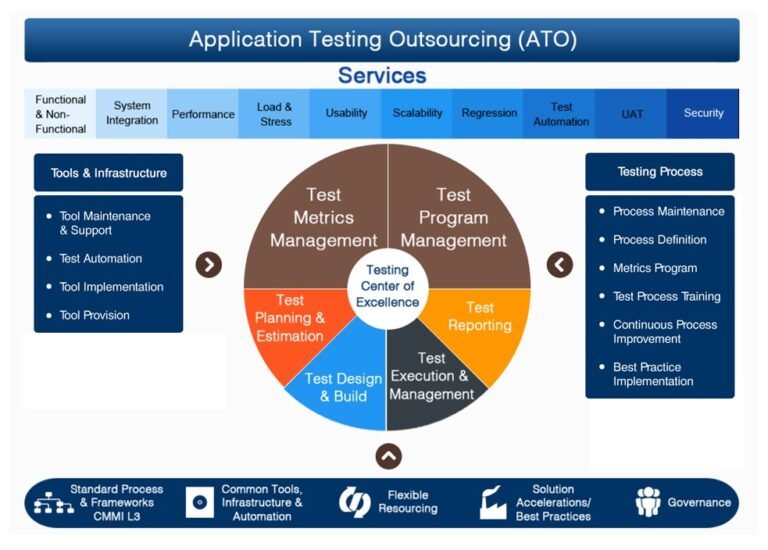The digital economy is undergoing a transformative shift with the rise of Web3, a decentralized internet built on blockchain technology. Unlike Web2, where data, platforms, and value creation are dominated by centralized corporations, Web3 gives power back to individuals and communities through decentralized networks, peer-to-peer transactions, and tokenized ecosystems. At the heart of this transformation lies cryptocurrency development, which enables businesses to create, trade, and manage digital assets that fuel Web3 economies.
For companies aiming to future-proof their growth and gain an edge in emerging markets, embracing cryptocurrency development is no longer optional—it is a strategic move. In this blog, we will explore how businesses can leverage cryptocurrency development to enter the Web3 economy, the opportunities it creates, and the best practices for building a successful crypto-powered ecosystem.
Understanding the Web3 Economy
The Web3 economy is characterized by decentralization, tokenization, and user ownership. Unlike traditional business models, where value primarily flows upward to large corporations, Web3 distributes value across users, communities, and stakeholders. Blockchain-based platforms empower participants to interact without intermediaries, relying on smart contracts for trustless agreements and cryptocurrencies for financial incentives.
In Web3, assets can be digital (NFTs, tokens, DAOs) or hybrid (tokenized real-world assets like real estate or art). Businesses adopting Web3 models can tap into new monetization strategies, global liquidity pools, and borderless communities, creating stronger engagement with customers who are also stakeholders.
Why Cryptocurrency Development is Key to Entering Web3
Cryptocurrency development provides businesses with the infrastructure to build native tokens, stablecoins, and utility assets that enable participation in the Web3 ecosystem. These tokens aren’t just financial instruments—they are governance tools, community incentives, and programmable assets that unlock new possibilities for decentralized innovation and digital ownership.
Businesses can use cryptocurrency development to:
-
Raise capital through Initial DEX Offerings (IDOs), Security Token Offerings (STOs), or tokenized crowdfunding, giving startups access to global investors without traditional barriers.
-
Create ecosystem utility with tokens that power services, grant access to features, or enable governance voting, ensuring users feel like active stakeholders.
-
Build global communities by rewarding participation and incentivizing engagement, transforming customers into brand ambassadors.
-
Enable financial inclusion by offering borderless, low-cost transactions that bypass traditional banking restrictions and reach underserved populations.
-
Tokenize assets such as equity, real estate, intellectual property, or loyalty points, creating liquidity and fractional ownership opportunities.
Ultimately, cryptocurrency development bridges traditional businesses with Web3, empowering them to innovate faster, connect with decentralized communities, and unlock new revenue models that weren’t possible before.
Business Opportunities in Cryptocurrency Development
1. Tokenized Business Models
Tokenization is revolutionizing how ownership and value are represented. By converting physical or digital assets into blockchain-based tokens, businesses can enable fractional ownership, creating accessibility for a much broader pool of investors. For instance, real estate properties, luxury goods, or even shares of digital art can be tokenized, making them available to global participants who might otherwise be locked out of high-capital markets. Beyond liquidity, tokenization enhances transparency and trust by recording ownership rights on-chain, reducing reliance on intermediaries such as brokers or banks. Businesses that adopt tokenized models gain an edge in terms of cost efficiency, global investor reach, and the ability to innovate in traditionally slow-moving industries.
2. Community-Led Growth through Utility Tokens
In Web3, communities form the backbone of growth. Utility tokens enable businesses to reward and empower their users with real, tradable economic value. Unlike conventional loyalty points, utility tokens can be used across ecosystems, traded, or staked, offering participants tangible incentives to remain engaged. For example, a SaaS company could issue tokens that unlock premium services, provide early access to product launches, or grant governance rights, allowing users to shape the platform’s roadmap. This transforms customers from passive buyers into active stakeholders, fostering stronger community bonds and long-term brand loyalty.
3. Cross-Border Payments and Financial Inclusion
One of the most immediate applications of cryptocurrency lies in solving inefficiencies in global payments. Traditional cross-border transactions are riddled with high fees, delays, and dependency on centralized intermediaries. By adopting cryptocurrencies and stablecoins, businesses can conduct near-instant international payments at minimal cost. This levels the playing field for small and medium-sized enterprises looking to expand globally, especially in developing regions where banking access remains limited. Moreover, crypto-powered financial inclusion gives millions of underbanked individuals access to global markets, opening new customer segments for businesses willing to embrace blockchain-based payment systems.
4. Decentralized Finance (DeFi) Integration
DeFi unlocks an entirely new layer of financial opportunities. By integrating business tokens with DeFi protocols, companies can provide their communities with added utility such as staking, lending, borrowing, or yield farming. This creates new streams of passive income for users and positions businesses as part of a broader financial ecosystem rather than a siloed service provider. For instance, a gaming studio could issue tokens that players stake for rewards, or an e-commerce brand could integrate DeFi-based loyalty programs, turning everyday purchases into yield-generating activities. Businesses that leverage DeFi integration not only expand their revenue potential but also enhance customer stickiness through financial incentives.
5. Fundraising and Liquidity Creation
Raising capital in the Web3 era is no longer confined to venture capital or traditional equity markets. Token offerings—whether through Initial Coin Offerings (ICOs), Initial DEX Offerings (IDOs), or Security Token Offerings (STOs)—allow businesses to quickly access global pools of liquidity. These fundraising mechanisms provide a transparent, decentralized, and efficient way for both startups and established enterprises to secure growth capital. Launchpads and decentralized exchanges further amplify exposure, creating communities of early supporters who benefit from the project’s success. Beyond fundraising, tokens can also enhance liquidity by enabling secondary market trading, something often unavailable in traditional private equity investments.
Steps for Businesses to Enter the Web3 Economy with Cryptocurrency Development
Step 1: Define the Business Use Case
The first step for any business entering the Web3 space is to clearly define the token’s purpose. Tokens can serve multiple functions: they might facilitate fundraising, incentivize community participation, grant governance rights, or act as a medium of exchange within an ecosystem. Without a clearly defined utility, a token risks becoming purely speculative, which can lead to volatility and limited adoption. By identifying the core use case, businesses ensure that the token aligns with both operational objectives and long-term growth strategies. A well-defined purpose also communicates credibility to investors and users, fostering confidence and engagement from the outset.
Step 2: Choose the Right Blockchain Platform
Selecting the appropriate blockchain is critical for performance, cost-efficiency, and community adoption. Ethereum is the dominant choice due to its mature smart contract infrastructure and extensive developer ecosystem. However, alternatives such as Binance Smart Chain, Solana, Avalanche, and Polkadot provide advantages in scalability, transaction speed, and lower fees. Businesses must weigh factors like interoperability with other networks, transaction throughput, ecosystem support, and security before finalizing their platform. The right choice ensures smooth operations, cost-effective scaling, and better adoption potential for both users and investors.
Step 3: Design Tokenomics
Tokenomics—the economic blueprint of a cryptocurrency—determines its value, distribution, and long-term sustainability. Businesses must carefully balance scarcity, incentives, and accessibility to maintain demand. Key considerations include total supply (fixed vs. inflationary), distribution models (airdrops, pre-sales, staking rewards), utility (governance, utility, or security), and incentives for long-term holding. Properly designed tokenomics create a self-sustaining ecosystem where participants are motivated to engage, hold, and contribute to the network’s growth, ensuring a thriving community around the token.
Step 4: Develop and Audit Smart Contracts
Smart contracts are the backbone of any token ecosystem, automating transactions, governance, and rewards. Security is paramount; even minor vulnerabilities can result in significant financial losses and reputational damage. Businesses must invest in professional smart contract development and rigorous auditing processes. Auditors test for reentrancy, logic errors, and edge-case exploits, providing assurance that the code is robust, reliable, and aligned with the token’s intended functionality.
Step 5: Build a Community-Centric Ecosystem
Web3 projects succeed or fail based on their communities. Establishing vibrant, engaged communities on platforms like Discord, Telegram, and Twitter is essential. Businesses can incentivize participation through staking rewards, governance voting, or play-to-earn mechanics. Community members are transformed into stakeholders who actively contribute to project growth, amplify marketing efforts, and provide feedback that drives continuous improvement.
Step 6: Ensure Regulatory Compliance
Navigating regulatory requirements is essential for long-term sustainability. Businesses must correctly classify tokens (utility vs. security), implement KYC/AML protocols, and maintain transparent disclosures. Proactive compliance reduces legal risk, reassures investors, and positions the project for partnerships with exchanges and institutional participants.
Step 7: Launch and Scale
Once the token is developed, audited, and the community engaged, businesses can execute their launch strategy via centralized exchanges (CEXs), decentralized exchanges (DEXs), or IDO launchpads. Post-launch, sustained growth depends on continuous community engagement, strategic partnerships, token upgrades, and adaptive marketing. Scaling effectively ensures that the token maintains relevance, utility, and user trust over time.
Benefits of Cryptocurrency Development for Businesses
Global Reach
Cryptocurrency development provides access to a borderless digital economy. Blockchain and digital tokens allow businesses to tap into global liquidity, reaching investors, customers, and partners anywhere. This enables rapid scaling without being limited by national borders or local infrastructure.
Cost Efficiency
Blockchain transactions reduce operational costs by eliminating intermediaries such as banks and payment processors. Transactions are faster, cheaper, and more transparent, allowing businesses to allocate resources efficiently. Lower fees also make microtransactions feasible, enabling new business models and reinvestment into growth and innovation.
Stronger Customer Loyalty
Digital tokens foster deeper relationships with communities. Unlike conventional loyalty programs, tokens provide real economic value and ownership. Rewarding users for participation or governance engagement creates shared stakes in the project, driving long-term loyalty, organic promotion, and sustained growth.
Faster Innovation
Blockchain ecosystems are open-source, allowing rapid experimentation and deployment. Businesses can create tokenized marketplaces, play-to-earn platforms, or DeFi integrations without delays typical in centralized systems. Open protocols encourage collaboration, enabling faster feature development and competitive advantages.
Resilience and Transparency
Blockchain ensures transparency, immutability, and security. Every transaction is recorded on a decentralized ledger, reducing fraud, tampering, or censorship. This fosters trust with investors and customers, enhances regulatory compliance, and strengthens business resilience against attacks or system failures.
Real-World Examples of Businesses Leveraging Cryptocurrency Development
1. Shopify and Crypto Payments
Shopify integrated crypto payments to allow merchants to accept Bitcoin, Ethereum, and stablecoins. This opened global markets for small businesses, reduced transaction fees, and expanded customer bases.
2. Nike and NFT-Backed Digital Assets
Nike has embraced Web3 by developing NFTs linked to physical sneakers. This move not only monetized digital ownership but also created strong community engagement among sneaker enthusiasts and collectors.
3. Tesla and Bitcoin Transactions
Tesla’s experiment with Bitcoin payments highlighted how large enterprises can leverage cryptocurrency as both a treasury asset and a payment method, reinforcing its role in the Web3 economy.
4. Decentralized Autonomous Organizations (DAOs)
DAOs like MakerDAO and Uniswap showcase how businesses can evolve into community-governed entities. Instead of centralized decision-making, governance tokens empower users to shape the project’s future, ensuring long-term alignment between businesses and communities.
The Future of Businesses in the Web3 Economy
As blockchain adoption grows, businesses that embrace cryptocurrency development will become early leaders in the decentralized economy. From tokenized supply chains to NFT-driven brand loyalty programs, opportunities are limitless. Companies that successfully integrate Web3 principles will benefit from enhanced transparency, deeper customer engagement, and innovative revenue models.
Web3 is not just a technological shift—it’s a cultural and economic one. Businesses that ignore it risk falling behind, while those that act today position themselves as pioneers of a decentralized future.
Final Thoughts
Cryptocurrency development is the gateway for businesses to enter the Web3 economy. It empowers organizations to build tokenized ecosystems, unlock new business models, and engage with communities in meaningful ways. Whether through payments, tokenization, fundraising, or governance, crypto-driven innovation is reshaping the way businesses operate and interact with stakeholders.
The Web3 economy represents a paradigm shift from centralized control to decentralized empowerment. By strategically leveraging cryptocurrency development, businesses can future-proof their growth, create value-driven communities, and participate in the most revolutionary transformation of the digital age.The question is no longer if businesses should embrace cryptocurrency development, but how quickly they can adapt to secure their place in the Web3 economy.





